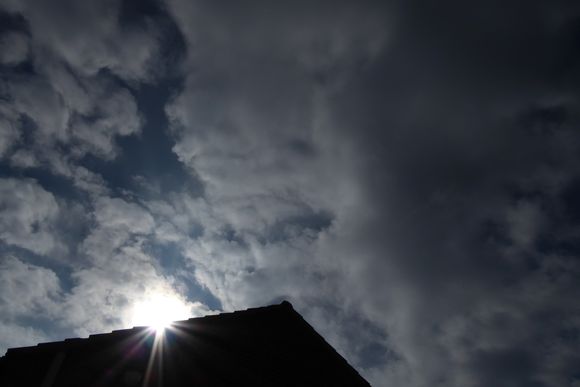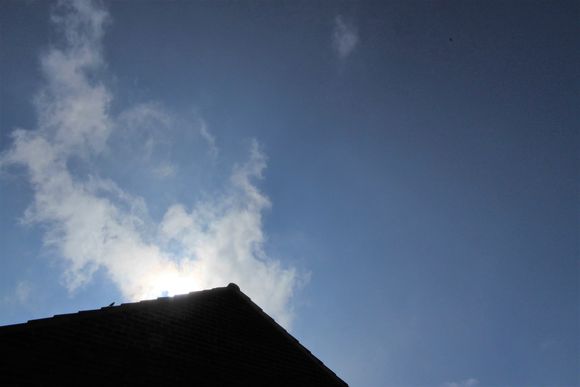Think this may have always been a challenge to view Venus’ occultation by the waning moon. And so it proved. The day itself was much improved on the previous 8 or 9 days and I had some optimism that something would be viewed. The start of the occultation occurred at 08:38h from Whitby, so with compass, tape measure, binoculars and camera on hand, the plan was to first locate the moon using the compass, tape and binoculars and then to use a telescope and camera for the egress of Venus from behind the moon an hour later. It seemed a good plan, but had one major flaw, actually locating the crescent moon.
For a start, and right on cue, light cloud appeared, obscuring the area of sky where the moon would be located. Then, higher wispy cloud hardly noticeable to the naked eye but visible through binoculars seemed to thwart any attempt to glimpse the slim crescent moon. The real drawback however, was the relative proximity of the Sun, just a hands span to the left, causing the sky within this area to appear much brighter than sky further away, which appeared a deeper shade of blue in hue.
I tried various binoculars; 7x50, 7x35, 15 x 70, but to no avail. Then intermittent, thicker cloud, again rolled across the target area. This cleared and after one more attempt, reluctantly I gave up. A GOTO telescope would have zeroed in on the moon, but whether or not anything would have been readily visible is for others to testify.

19-Jun-2020 at 08:47h+24 seconds: Cloud appears for start of Venus-Moon occultation

19-Jun-2020 at 08:47h+39 seconds: Venus and Crescent Moon still in Cloud at start of Occultation.
|
19-Jun-2020 at 08:47h+55 seconds: Venus |
19-Jun-2020 at 09:12h: |

19-Jun-2020 at 09:13h: no cloud but no moon either.

19-Jun-2020 at 09:12h: 'Honest guv, it should be right here in the middle'.
- Log in to post comments



